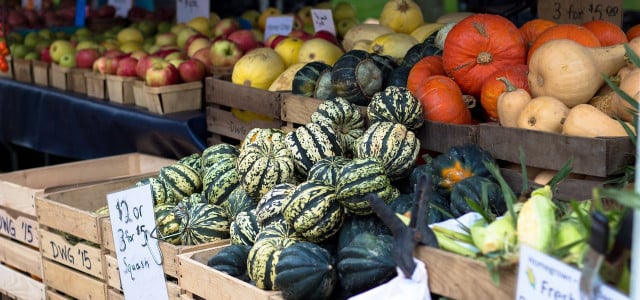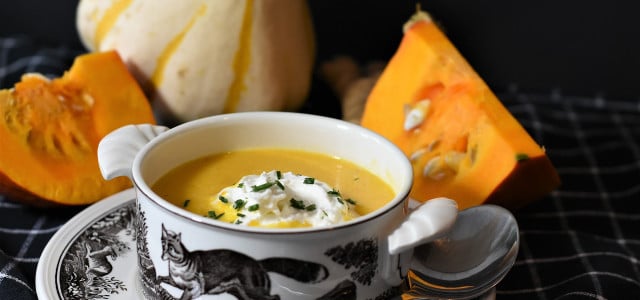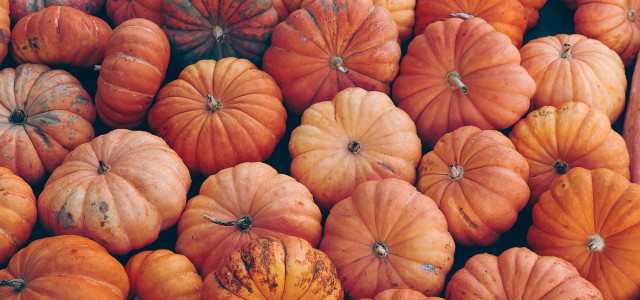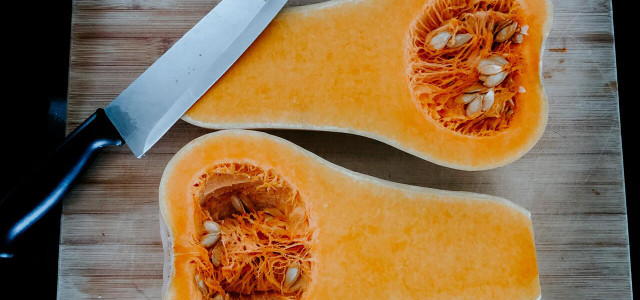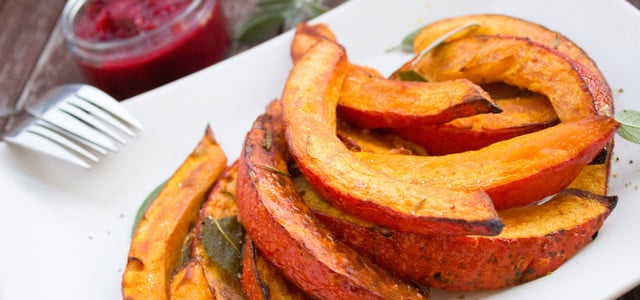Many different winter squash varieties are available in the fall and winter months. Each is unique, so learn how to use the most common types here.
Each winter squash variety has a slightly different taste, texture, and size, which lends itself to different uses. Regardless of which squash you choose, don’t forget to save the seeds. For a nutritious snack, you can eat pumpkin seeds in granola, as flour, or as roasted pumpkin seeds.
Pumpkin Winter Squash Varieties
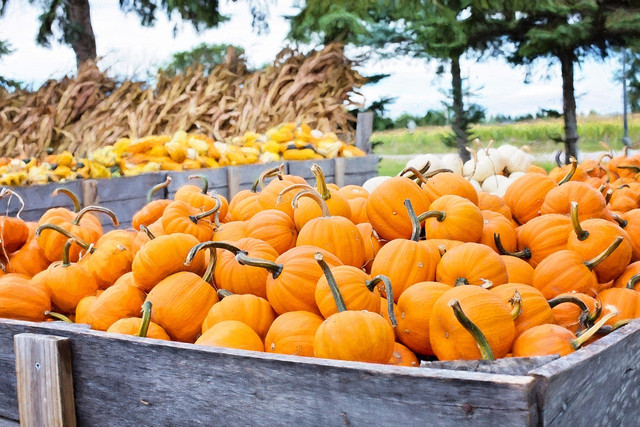


Though all pumpkins are edible, the smaller sugar pumpkins have denser, sweeter, and richer flesh than the larger carving pumpkins, which tend to be bland and stringy. Pumpkins have tough skin that is easily removed through roasting (though you can eat pumpkin skin), meaning that pumpkin is often used and sold as a puree. As a result, many dishes incorporate puréed pumpkin into soups, sauces, dips, or pasta fillings.
The sweet and mild taste also lends itself better to desserts than other squash, which is why pumpkin pie is such a popular autumn treat. Try these pumpkin recipes, and don’t be afraid to use other squash varieties:
- Pumpkin Gnocchi With (Vegan) Sage Butter Sauce
- Easy & Delicious Vegan Pumpkin Cake With Frosting
- Vegan Pumpkin Cheesecake: An Easy Fall Recipe
- Tired of Soup? 3 Easy Outside-the-Box Pumpkin Recipes
- The Perfect Dairy-Free Pumpkin Pie Recipe
- How to Make Pumpkin Dip (Natural and Vegan)
Spaghetti Squash
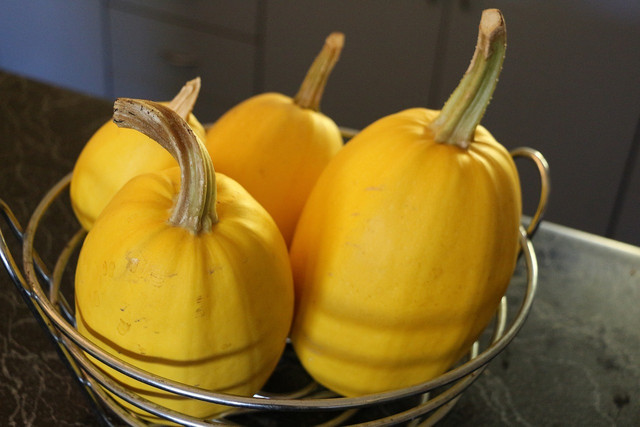


The spaghetti squash is named for its fibrous flesh, which can be separated into spaghetti-like ribbons once cooked. This texture allows this winter squash to be used just like a low-carb pasta alternative or even shaped into dumplings or pancakes.
When sliced in half and hollowed out, the squash can also be stuffed to feed an entire family. Because this winter squash is milder, crunchier, and more watery than others, it is less suited for rich and creamy recipes.
Butternut Squash
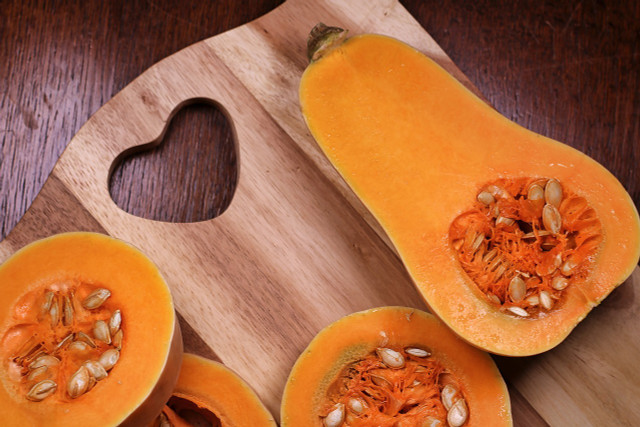


One of the most readily available winter squash varieties is the butternut squash. The sweet and savory flavor makes it a versatile vegetable well suited to hearty meals to warm you up during the colder months.
The skin is tougher and less attractive than other winter squash varieties; butternut squash is often mashed or diced to add to salads, stews, pasta, casseroles, curries, or oven-roasted butternut squash. The large size also means that butternut squash can make huge servings to feed a family.
Acorn, Carnival, and Sweet Dumpling Squash
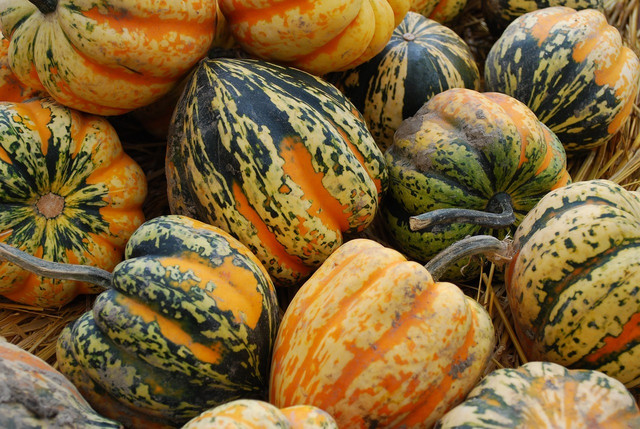


Nearly as common as the butternut, acorn squash is known for its mild flavor and distinctive shape. Its grooved cup shape makes it ideal for roasting in slices or stuffed to make an attractive dinner for two. The sweet dumpling squash is smaller, sweeter, more colorful, and has a softer skin; this means it can be cooked as an individual portion, stuffed and eaten whole, or used as a decoration. The carnival squash is a hybrid between the acorn and sweet dumpling squash and can be eaten the same way as either.
Delicata Squash
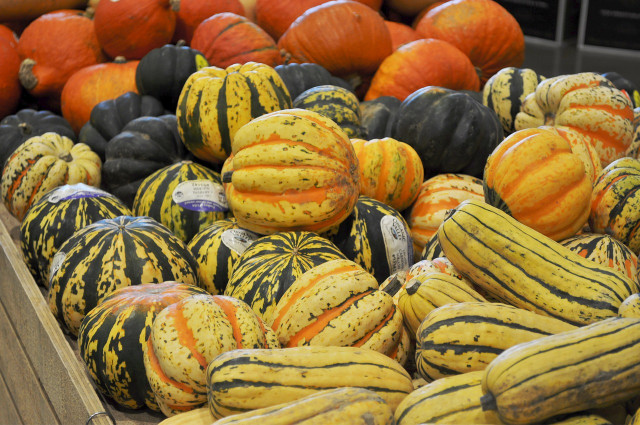


The delicata squash has a grooved, elongated shape with delicate, colorful skin perfect for eating whole. It is often stuffed or sliced like an acorn squash to preserve its shape without peeling. Also known as the sweet potato squash for its flavor, it can also be used in any recipe using a sweet potato, such as healthy mashed sweet potatoes.
Red Kuri Squash



Also known as the Hokkaido pumpkin, the red kuri squash is known for its vibrant color, onion-like shape, and nutty flavor. This versatile winter squash variety can be steamed, mashed, stuffed, or roasted with the benefit of having thinner edible flesh and a manageable size. You can easily substitute this winter squash for pumpkin in most recipes.
Turban Squash
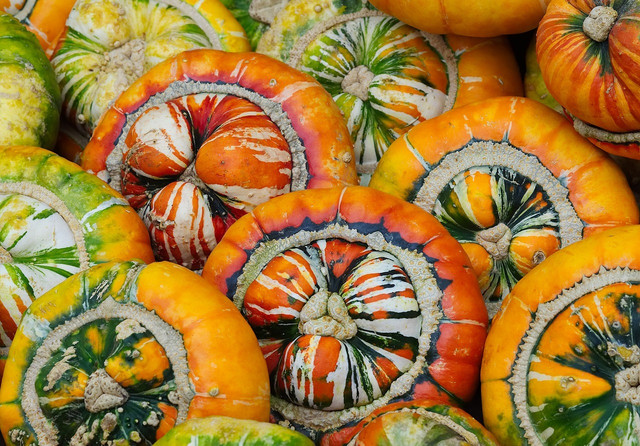


The turban squash is a winter squash variety often used decoratively for its unusual appearance. Though similar in flavor to butternut squash, it has a less vibrant taste and grainier texture. The shape and size make it suitable for stuffing or hollowing for soup, like a bread bowl.
Kabocha Squash
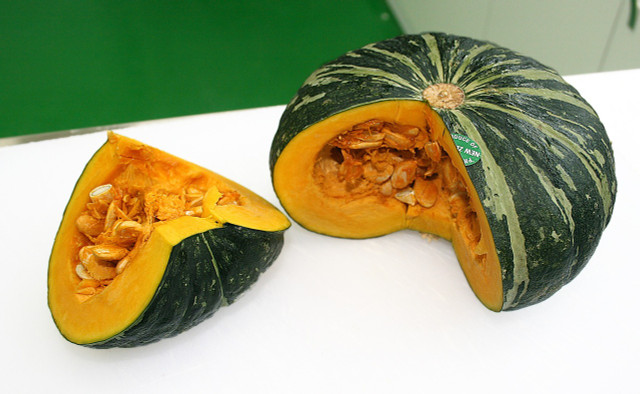


Often used in Asian cooking, the kabocha squash has a creamy and nutty flavor that is sweeter than other winter squash varieties. While it works exceptionally as a dessert, it can also be roasted to add a crunch or steamed to a soft creamy texture.
Read more:
- Sweet Potato vs. Russet Potato: Which Is Best?
- Can You Eat Squash Raw? Here’s What You Need To Know
- How to Preserve Pumpkins & Enjoy Year-Round
Do you like this post?






